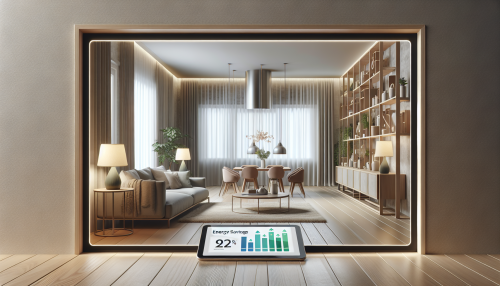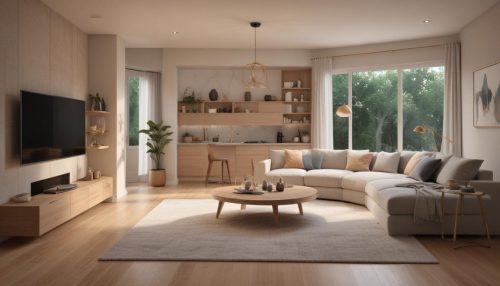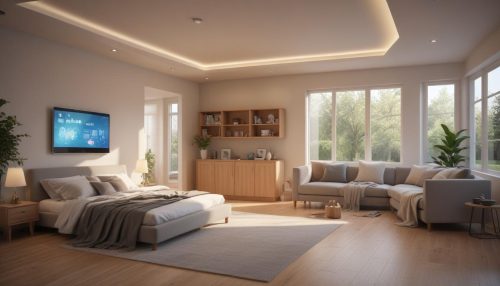Tiny Homes Redefined What Living Small Means for You
Olivia Morgan August 28, 2025
Tiny homes are reshaping how people think about lifestyle, entertainment, and sustainability. This guide explores why living small attracts so many, how design impacts daily joy, and different ways to enjoy more with less space—without sacrificing comfort or creativity.
Tiny Homes Appeal Why More Choose to Downsize
The shift towards tiny homes reflects evolving ideas about how lifestyle impacts happiness. Individuals and families see these compact houses as a way to simplify life, reduce expenses, and promote sustainable living. Many are opting for smaller spaces not just to save money, but because they feel more in control of their environment and daily routines. The minimalist approach means fewer possessions yet greater intent behind each item kept and every design choice made. As people reconsider what truly brings fulfillment, the excitement of personalizing a tiny home grows, offering a sense of purpose and autonomy.
Design innovations now enable tiny homes to feel more spacious and multifunctional. Clever layouts use lofts, foldaway furniture, and sliding doors to provide flexibility. Natural lighting, eco-friendly materials, and smart technology are used to create an inviting and efficient environment within limited square footage. Every square foot must serve more than one need—kitchens become gathering places, living rooms convert to sleeping zones, and outdoor decks double as entertainment spaces. These solutions help homeowners experience less clutter and more lifestyle freedom, which resonates especially among younger generations and retirees.
The entertainment angle is just as important. People living in tiny homes often report that limited internal space draws them outdoors. Hosting garden parties, backyard movie nights, or pop-up picnics becomes part of the routine. The compactness of tiny homes encourages creative socializing, where group activities take precedence over material displays. With more time and fewer household chores, residents can focus on experiences—like music nights, board games, or learning new hobbies—that bring friends and family together in fresh ways.
Design Strategies That Make Small Spaces Shine
Great tiny home design is all about creative use of space. Flexible furniture is essential. Murphy beds, nesting tables, and fold-down desks offer functionality without taking up valuable real estate. These features help transform a single room into a bedroom, office, or entertainment area, depending on the need. Many tiny homeowners prioritize storage solutions built into stairs or under seats, allowing each part of the house to serve multiple roles. Exploring these design trends offers insight into how living smaller can amplify comfort and flair.
Color choices and natural light have an outsized impact on the mood and feel of a tiny home. Lighter hues and plenty of windows can make even the most compact space seem airy and inviting. Skylights are popular not only for their style but for improving mental health by maximizing daylight. Compact kitchens and bathrooms now feature energy-efficient appliances and premium finishes, proving that downsized living does not mean compromising on amenities. Plants, mirrors, and personal art all add depth and warmth, making each home unique and welcoming.
Entertainment and lifestyle are not limited by four walls. Outdoor living has become a hallmark of tiny home culture. Rooftop decks, patio extensions, and retractable awnings create extra room for gatherings and celebrations. Firepits, mini gardens, and portable sound systems help homeowners turn modest yards into vibrant social spaces. With increased focus on outdoor activities, tiny homes cultivate a deeper appreciation for nature, breathing new life into both daily routines and special occasions. These choices reinforce the trend—small can be spectacular.
Making Minimalism Fun The Emotional Benefits
Minimalism in tiny homes is not about deprivation. It is about freedom. Many find joy in letting go of excess ‘stuff’ and focusing on what matters most—relationships, experiences, and personal growth. This mindset is supported by data showing that cluttered spaces often raise stress levels and hinder creativity. By curating possessions and keeping only what serves a purpose or inspires happiness, tiny homeowners report calmer minds and more satisfying daily routines. The tiny lifestyle highlights living with intention, not just restriction.
For entertainment lovers, minimalism can clear the stage for richer experiences. Instead of collecting things, the emphasis is on making memories. Movie nights become special rituals, cozy game evenings foster stronger bonds, and even simple dinners feel more celebratory when shared in thoughtfully arranged surroundings. Studies suggest minimal living can increase feelings of gratitude, mindfulness, and well-being. Choosing less, it turns out, can open the door to more vibrant living.
The emotional benefits extend to creativity and self-expression. In a tiny home, every design decision—wall color, lighting, artwork—carries real significance. Residents are inspired to personalize small spaces with hand-picked decor, plants, DIY projects, or even rotating art displays. These choices transform a functional dwelling into a true reflection of its owner’s style and aspirations, reinforcing the idea that happiness is found in curation, not accumulation.
Community and Connection A New Social Scene
Tiny homes are sparking a new kind of community. Many owners gather in clusters, forming intentional neighborhoods where resources and ideas are shared. Community gardens, tool libraries, and group events become part of daily life, reducing isolation and building lasting bonds. These communities promote a sense of belonging and mutual support, making the transition to tiny living smoother and more enjoyable. It’s about more than just shared space; it’s about collective purpose and shared growth.
For entertainment, communal living takes center stage. Block parties, potlucks, skill-sharing workshops, and outdoor concerts turn simple dwellings into vibrant gathering spots. Events are often inclusive, catering to all ages and interests. Children have room to play and explore while adults enjoy meaningful conversations or group games under the stars. In this way, tiny home communities are recasting the traditional neighborhood as a place not only for shelter, but for engagement and friendship.
Technology is also shaping connection in the tiny house world. Online forums, video tours, and digital workshops help people learn about and join these communities, making the lifestyle more accessible to newcomers. Residents collaborate virtually, organize events, and troubleshoot shared challenges, creating a strong network that extends beyond physical boundaries. These digital links encourage continued learning and make it easier for newcomers to engage quickly and meaningfully in their new setting, ensuring that the tiny house experience remains dynamic and inclusive.
Entertainment Elevated Small Spaces Big Moments
Downsizing does not mean giving up entertainment. Micro-theaters, smart projectors, and modular seating can turn a compact living room into a full-fledged entertainment suite. Tiny home owners are designing spaces where multifunctionality is key—a sofa by day morphs into stadium seating for movie night. Portable speakers and wireless systems deliver immersive sound without clutter. The emphasis is on choosing equipment that fits seamlessly into the environment, supporting maximum enjoyment with minimal intrusion.
Hosting friends within a tiny footprint also brings excitement. The compact nature invites closer connection. Board game nights, charcuterie tastings, and karaoke sessions prove that a smaller venue can lead to bigger laughs and stronger memories. Tiny kitchens inspire experimentation with easy-to-share recipes and creative bartending, making social gatherings as vibrant as those in larger homes. Many describe entertaining in a tiny home as personal, cozy, and unforgettable.
The outdoor landscape amplifies entertainment possibilities. Patios, roof gardens, or nearby communal spaces allow for sports, group barbecues, movie screenings under the stars, or mini music fests. Some embrace the flexibility of mobile tiny homes by traveling to festivals or scenic settings, blending travel experiences with the comforts of home. With a little creativity and planning, every inch of space—indoors and out—becomes a stage for fun and memorable occasions.
Getting Started Your Path to Tiny Home Living
For those dreaming of the tiny home lifestyle, the first step is to clarify priorities. What are the activities or experiences that mean most? Assessing needs helps determine the right size, features, and location for a future dwelling. Researching zoning laws, eco-friendly home standards, and financing options can smooth the planning process. Connecting with others who have made the transition can provide practical tips and encouragement.
Exploring tiny home exhibitions, online communities, and in-person open houses reveals the diversity within the movement. From single individuals and couples to growing families and retirees, there is no single version of ‘tiny.’ Modular designs, do-it-yourself builds, and move-in-ready models each offer unique benefits and challenges. Carefully weighing the pros and cons ensures a choice that fits personal goals and lifestyle preferences, while keeping sustainability and affordability in mind.
Getting inspired is easy—hundreds of stories document journeys to tiny home living. Online resources feature interviews, floor plans, and design hacks, empowering new enthusiasts to adapt ideas into their routines. Some people start small by decluttering or trying short-term rentals. Others dive in by building custom homes from the ground up. Regardless of the path, the result is often greater contentment, deeper connection, and more inspired living in every moment.
References
1. American Institute of Architects. (n.d.). Tiny Homes: A New Movement in Sustainable Living. Retrieved from https://www.aia.org/resources/6144065-tiny-homes-a-new-movement-in-sustainable-living
2. U.S. Department of Energy. (n.d.). Energy Efficient Homes. Retrieved from https://www.energy.gov/energysaver/energy-efficient-home-design
3. National Association of Home Builders. (n.d.). The Tiny Home Phenomenon. Retrieved from https://www.nahb.org/news-and-economics/industry-news/press-releases/2020/03/the-tiny-home-phenomenon
4. Psychology Today. (n.d.). The Science Behind Decluttering. Retrieved from https://www.psychologytoday.com/us/blog/the-clarity/202109/the-science-behind-decluttering
5. The Spruce. (n.d.). Tiny House Storage Hacks. Retrieved from https://www.thespruce.com/tiny-house-storage-ideas-5192841
6. International Code Council. (n.d.). Guidelines for Tiny Houses. Retrieved from https://www.iccsafe.org/products-and-services/i-codes/2018-international-residential-code/2018-irc-tiny-houses/





